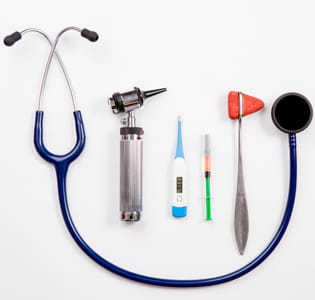
TRANSITIONING into a locum career can be a daunting process whether you are a newly qualified GP looking for variety or a partner changing career direction. There are many reasons why a GP may choose to become a locum, but leaving behind the continuity of one practice and regular paid employment has its challenges.
As I approached the end of my GP training I remember feeling uncomfortable at the thought of walking away from secure employment. However, I wanted to challenge myself by working in different practices. I also wanted to understand how practices adapted to meeting their patients’ needs. Working with different patient populations and on different portfolio roles was also important to me. So, when I finished my GP training, I decided to work as a locum GP.
Below are some steps GPs can take to make a successful transition to locum work.
Plan ahead
Towards the end of my training I sent my CV with covering letters to all the local surgeries. (The NHS ‘Find GP services’ web page is great for finding practices in England or nhs24.scot in Scotland.) I followed up with a phone call and email to their practice managers (PMs) who requested a number of documents before I could start work.
These include:
- Documents confirming entitlement to work in the UK
- Certificate of completion of training
- Performers list confirmation
- GMC certificate • Medical indemnity certificate
- DBS check
- Immunisation status - Hep B
- Child safeguarding training certificate
- Basic life support training certificate.
I saved all these as a PDF that could be easily emailed but you could also create and share a document from a file sharing site such as Dropbox.
I prefer to liaise directly with practices but the alternative is to use agencies/third parties to source work. This comes with its own challenges. You may find that after the initial introduction to practices you’d rather work without a middleman, but it’s important to be aware of the terms and conditions. Often you will be prohibited from working directly with practices if the work is sourced via a third party.
Be responsive
PMs tend to have lists of locums with whom they communicate regularly, while others may use a Whatsapp group to post upcoming sessions. Once you are added to these lists, you will begin to receive work offers. You should respond promptly as it is often allocated on a first come, first served basis. I find the best approach is to contact practices directly and build up a portfolio of workplaces where you are familiar with local policies and pathways and can provide good patient care.
Admin
Be sure to keep a diary of all your booked sessions. This may sound obvious but double booking can happen and makes everyone’s life difficult. Using scheduling software like My Locum Manager can simplify the process.
Additionally, have a system to create invoices, log expenses, track mileage, monitor the number of sessions you are working in line with your indemnity and collect all work data for your accountant. You may have additional portfolio jobs which contribute to your income. You can do this manually, on Excel, or with a bespoke locum business toolkit like My Locum Manager. Ensure you have found a good medical accountant who can advise whether to set up as a sole trader or limited company.
Set terms
It is important that both you and the practice understand what work will be undertaken. When I first started as a locum I put together a contract setting out my terms and sent this to PMs. This stated the amount I expected to be paid and included the number of patients I expected to see in a routine surgery, how I wanted my surgery arranged regarding breaks and catch-ups, and the number of telephone calls and home visits included in my fee.
I also included a clause regarding cancelling work and the amount of notice I would give/expect to be given by practices. These terms and conditions help to protect me and the practice and ensure each party’s expectations are clear.
When it comes to agreeing a fee, I often ask practices what rate they usually pay and negotiate from there. Ensure you clarify if this rate is inclusive of your pension contribution.
On the day
Locum work in unfamiliar practices comes with its own risks. Ensure you arrive early to get set up in your room. Introduce yourself to key staff and get their extension numbers so you can access their advice quickly. If it has not already been sent to you, ask for the locum pack which will have key information, from login details to local prescribing protocols and referral pathways. Note down who you can speak to during clinic should you need a second opinion or other advice.
Useful questions to ask include:
- What is the extension number for reception?
- Where is the panic button?
- How do I call patients in?
- How do I request blood tests and where are these done (on site or local hospital)?
- How do I order X-rays and ultrasounds?
- How do I refer for physiotherapy and counselling?
- Where are MED3, MATB1 and maternity exemption forms kept?
- Do I dictate or type referrals?
Mutual support
The patients you see as a locum are your patients and you have a duty of care to them and your colleagues. Do not be tempted to "pass the buck", even if you won’t be working at the practice again. Clear documentation when arranging investigations and reviewing test results are extremely important from both a clinical and medico-legal point of view. Before starting your clinic, confirm who in the practice can act as a chaperone if needed, noting their full name and title.
Working across a regular group of practices can make continuity of care and patient review easier. But if you are changing practices regularly and won’t have the chance to follow-up a patient, don’t forget to do a comprehensive handover to your colleagues. You should also note down a clear plan so the patient’s regular doctor has all the relevant information they may need. Clearly document red flags, safety-netting advice and follow-up arrangements discussed with your patients. Try to keep up-to-date about prescribing polices and referral guidelines. One useful free online resource is the Red Whale GP Update Locum Essentials Guide.
I often discuss any queries I have with the practice’s regular doctors and make a point of submitting any referrals before I leave for the day.
Returning to practices
The key to locum success is being invited back by practices. It pays to be flexible in helping to meet the surgery’s needs, be punctual, organised, and be equipped with the necessary equipment. Developing a good working relationship with practices will help you access regular work, support and continuity and become a valued member of the wider team.
Dr Surina Chibber is co-founder of MyLocumManager.com – the cloud based locum business toolkit
This page was correct at the time of publication. Any guidance is intended as general guidance for members only. If you are a member and need specific advice relating to your own circumstances, please contact one of our advisers.
Read more from this issue of Insight Primary

Save this article
Save this article to a list of favourite articles which members can access in their account.
Save to library


